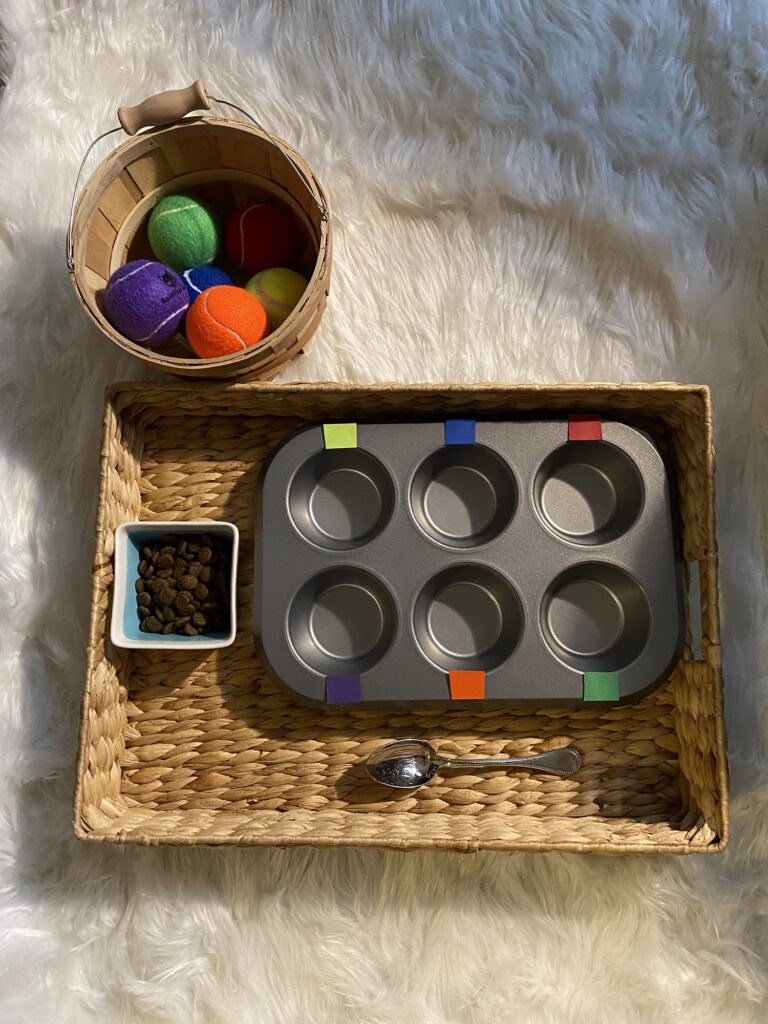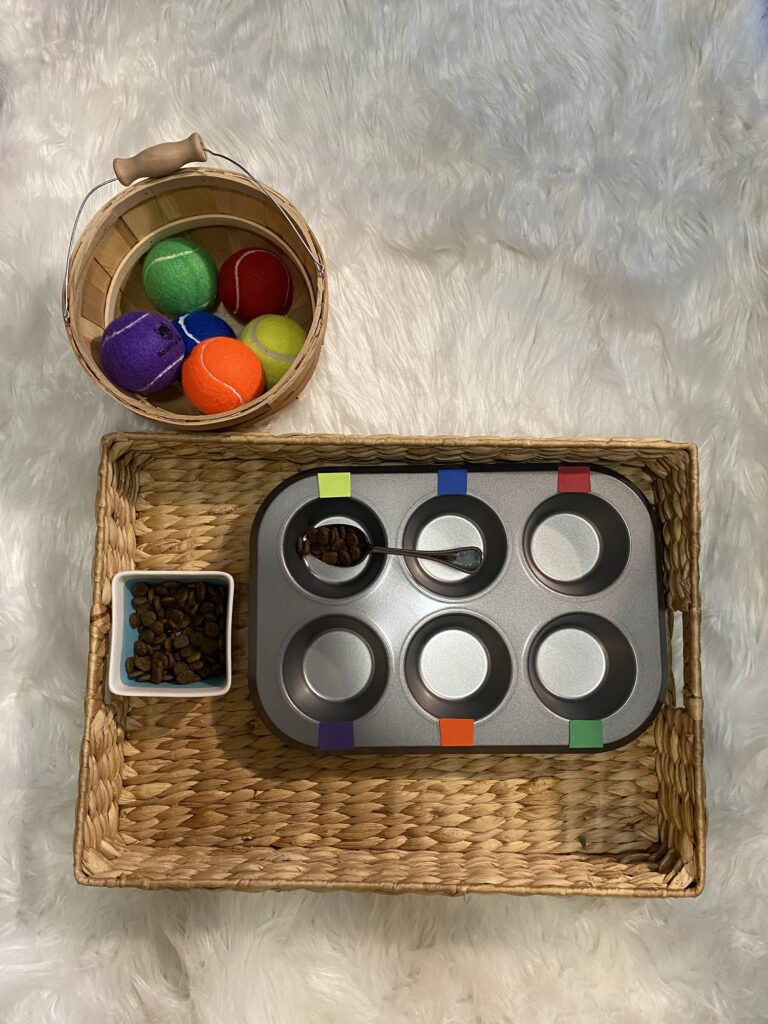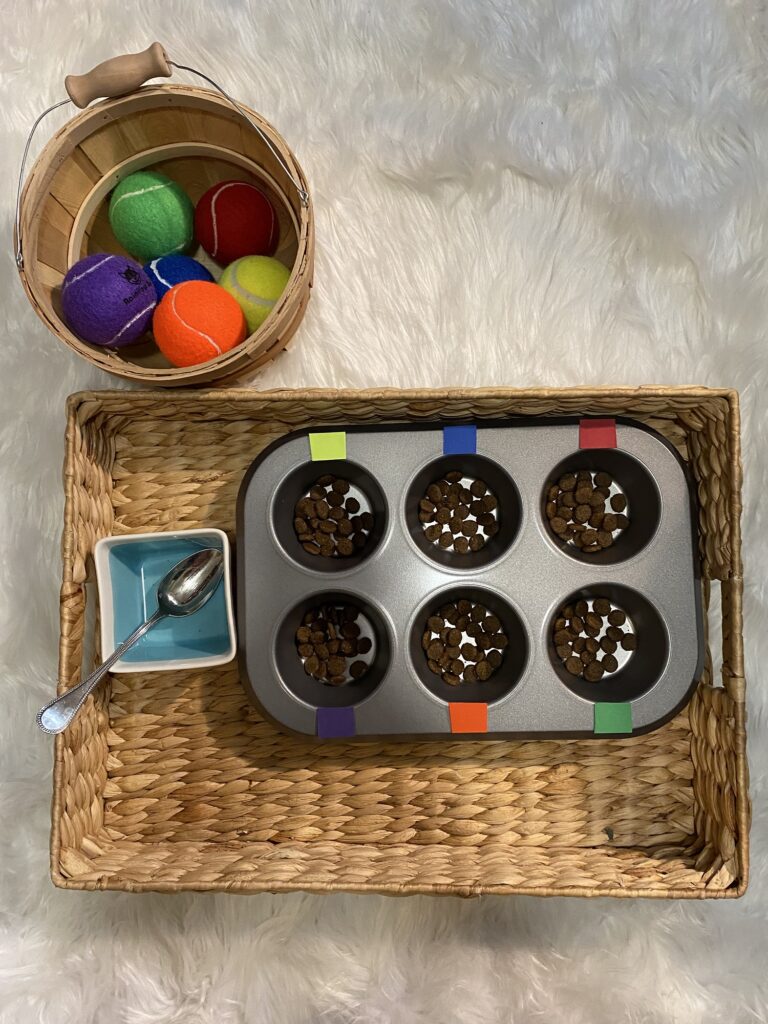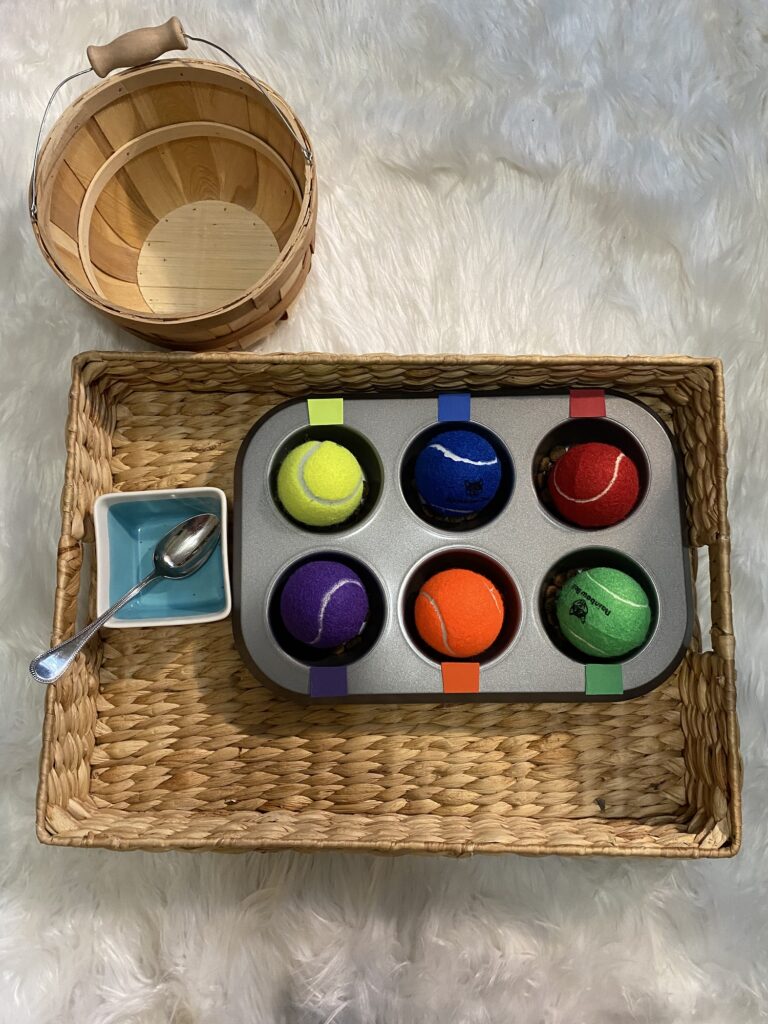If you prefer to listen to this blog, click here.
A BEHAVIOR CONSULTANT, A MONTESSORI TEACHER, AND A CASE MANAGER ALL WALK INTO A BAR…
Ok, that didn’t really happen. But if a behavior consultant, a Montessori teacher, and a case manager did walk into a bar as the old joke goes, you would actually be looking at one person. And that person would be me. You see, prior to joining the wonderful team at Pet Harmony, I had a background as a case manager for a social service agency and then taught at a private Montessori school for close to two decades. My route to becoming a trainer/behavior consultant is circuitous and years in the making and a story for perhaps another time. Instead, this post is about the most perfect partnership between my past and present selves and how I hope that partnership will be beneficial to families with children and dogs.
You see, I recently had the honor of becoming a Family Paws Parent Educator. That means that I took continuing education coursework to become licensed to work with families with dogs and babies and/or young children. To me, it feels like a match made in heaven. I get to use my skill set as a trainer and behavior consultant AND my skill set of working with human learners too! Oh, what a gift it is when the two things you feel most professionally passionate about come together in the most delightful way!
TWO-LEGGED? FOUR-LEGGED? LEARNING IS ALL THE SAME
I will never grow tired of watching learners learn. I don’t care if my learner has two legs or four. I marvel at the process every time I witness it and find it endlessly fascinating. It thrills me to see my learners acting on the environment and discovering that they can influence what happens next. Or when their foundational understanding of certain criteria becomes the building blocks for future, more complex learning. How exciting it is to see confidence grow and learning accelerate! Without becoming too hyperbolic about a thing, to be witness to the transformation your learner experiences as they become fluid in their understanding is incredibly rewarding.
Having been immersed in all things dog for the past few years has sort of put my background in education (at least of the human variety) on the back burner. But completing the Family Paws curriculum reignited my passion for helping young children be successful in their learning environments too and so I’ve been quietly brainstorming about merging my passions in a way that would be advantageous to both kids and dogs. Like a flash, one day it came to me that I could help dogs by creating learning opportunities for children as they engage in making enrichment items for their four-legged best friend. And VOILA! An idea was born!
BEFORE THE MEAT, HERE ARE SOME POTATOES
Before I share my first idea with you I thought it would be nice to provide some basic information about Montessori education since most of the ideas I will be sharing are inspired by the practical life area of a Montessori classroom. The following core principles are central to Montessori schools around the globe. Oh, and by the way, hold onto your hats folks because the parallels between the core principles of a Montessori education and what is universally understood about dog development and learning is pretty astonishing. Maria Montessori was ahead of her time and a maverick. Just saying.
CORE MONTESSORI PRINCIPLES
- The Absorbent Mind – children are born ready to learn how to learn. I mean, yes of course they are. As are all species including the ones we share our homes with.
- The Sensitive Period – sensitive periods are developmental windows of opportunity during which the child can learn certain concepts more readily and naturally than at any other time of their lives. Hello, critical socialization period for puppies!
- Children will auto-educate themselves – and sometimes not in the way we want them to. Does this sound familiar to you dog owners as well? We know that many dogs, when left to their own devices, will certainly find self-employment by chewing on the remote control, digging in the garden, barking at all passers-by or any number of other behaviors owners don’t particularly appreciate.
- Respect for the child – Don’t all living things deserve our respect including our beloved dogs?
SAVING THE BEST FOR LAST
This one really speaks to me not only as a former Montessori teacher but as a dog behavior consultant as well:
The Prepared Environment – Maria Montessori believed that children learn best in what she describes as a prepared environment. Great effort and intention are put into making sure the learning environment is organized in such a way that it supports children’s development and aids in their personal independence. Tables and chairs and shelves are sized so that the child can navigate the classroom independently. The carefully selected and designed Montessori materials are beautifully organized on shelves that set the child up for successful learning and exploration. Dr. Montessori held the conviction that in addition to the student and teacher, the environment is the “third teacher” in the classroom and thus should be prepared in a manner that captivates the child’s attention and maintains their focus.
Every time I read this description of the prepared environment, all the dog trainer in me can think of is how closely the prepared environment mimics what behavior folks call the antecedent arrangement. In short, the antecedent arrangement describes how the environment that the animal is in has been set up, hopefully deliberately, but sometimes not, to determine which behavior the animal is most likely to execute.
Just like in the case of children, the goal should be that the environment is set up in a way that allows our dogs to be successful learners. How cool is that?! If you would like to further your knowledge about Montessori Education just click the highlighted text. Likewise, if you would like to take a deeper dive into understanding antecedent arrangements, click the text and you will be diverted to a great article on the subject.
HERE COMES THE FUN STUFF!
Now that you have learned a bit more about the Montessori method, it is time to share my first idea with you. Remember, my goal is to use a Montessori-inspired approach to give your child the opportunity to learn and develop new skills while they are making enrichment items for your dog to enjoy. It is always a good idea to keep in mind that the item is only going to be enriching for your dog if your dog chooses to engage with or understands the enrichment activity. For more on creating an enrichment plan for your dog, read this: https://petharmonytraining.com/july-2021-training-challenge-evaluate-your-enrichment-plan/
I would also recommend that you set up the environment so that your child can focus on their task without the family dog trying to “help.” And what I really mean when I say “help” is sample the goods as they are being prepared. Perhaps another family member can take the dog for a walk or play a game of fetch in the backyard during prep time.
Also, as with all things dogs and kids, parental supervision is a must. I absolutely love this product to help your child be safe and successful: Toddler Tower Step Stool. I only wish such a wonderful tool was available when my kids were younger. (This is an affiliate link. We receive a small commission for purchases made through these links at no extra cost to you. This helps us continue to put out free content to help you and your pets live more harmoniously!)
One final recommendation. As the goal is ultimately for your dog to benefit from your child’s hard work, when it is time for your dog to engage with the prepared enrichment item, the child must not interrupt them. I would encourage your child to watch your dog enjoying their enrichment from a safe distance. The parent can reinforce the child’s hard work and kindness by pointing out how much the dog is enjoying the activity and perhaps capturing it on video to share with other family members later. What a wonderful thing indeed, for our children to learn the invaluable lesson that doing kind things for others, is truly a gift to oneself as well.
READY, SET, GO!
Material needed:
- Muffin tin
- Colored balls
- Construction paper that matches the color of the balls
- Bowl of your dog’s kibble
- Spoon
Parent set-up:
The parent will need to cut small pieces of the construction paper and tape them to the top of each section of the muffin tin as demonstrated in the first photo. Parents will also need to gather all necessary supplies and make them easily accessible to the child. A large tray works well for this. (See photos below)
Child activity:
The child will use the spoon and spoon a small portion of kibble into each separate section of the muffin tin. When the kibble has been spooned into the sections, the child can then match the colored ball to the section of the muffin tin that has the corresponding color paper.
Skills for the child:
- Practicing fine motor skills as they use the spoon to scoop up the kibble.
- Hand-eye coordination as they transfer the kibble from the spoon into the muffin tin.
- Color matching and discrimination
- Focus and concentration
NOW WHAT?
- Follow us on Instagram for more upcoming ideas, photos, and tutorials on kids and canine enrichment activities.
- We would love to see your photos of your kids preparing, or your dog enjoying, the enrichment that was made for him or her! Tag us @petharmonytraining on Facebook and Instagram.
- Read Canine Enrichment for the Real World for a deeper understanding of what canine enrichment is and how adding it to your dog’s daily routine can be a real game-changer for you and your dog.
MaryKaye







Loved this blog post MaryKaye! I’m going to forward it to clients with toddlers.
I was a Montessori kid and it would be super fun to have a Pro Campus discussion about integrating some of the principles from the Montessori method into our relationships with dogs (I think Suzanne Clothier does this in some of her webinars).
Thanks for this post, and your great example of a fun and skill-building activity.
Mason
Thank you Mason! Please feel free to share with any clients that you think will benefit. I have lots more ideas and will be posting on our Instagram page in the upcoming weeks as well if they would like to follow along. I love your idea for Pro Campus and will mention it to our team!
Love This!!!! ❤️
Thank you-much appreciated!